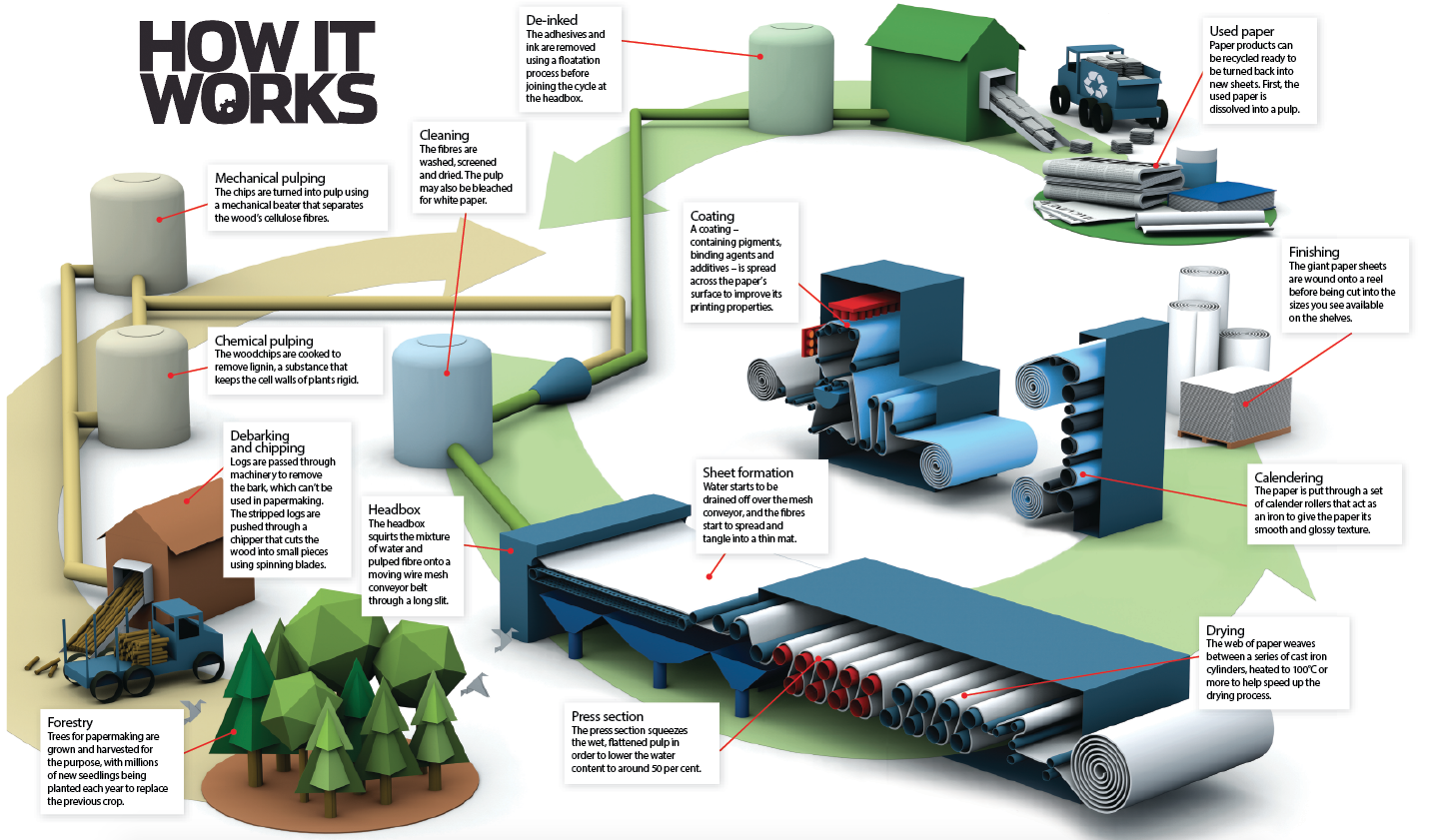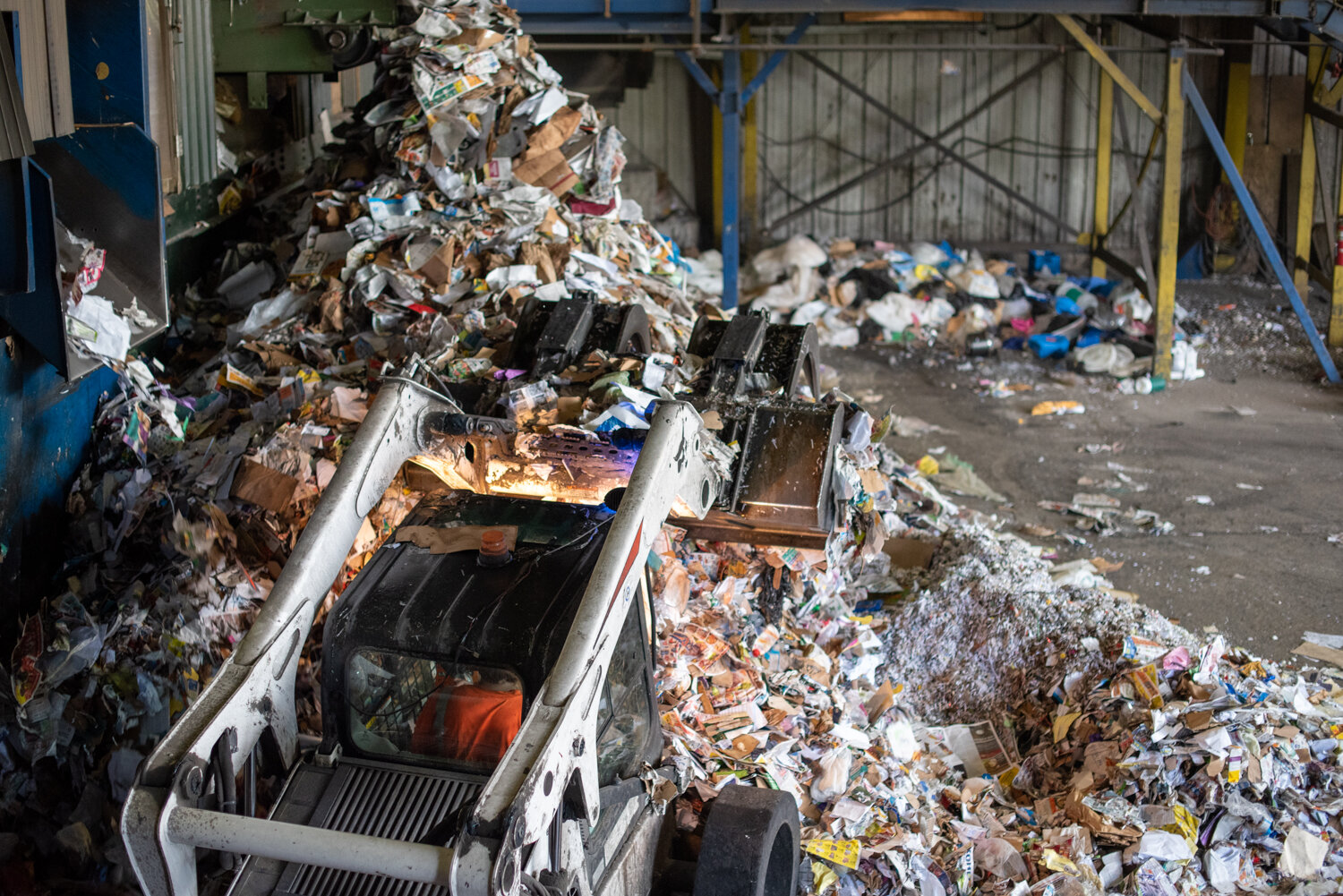Where Does Paper Come From?
Paper is essentially created through a two-part process:
Cellulose fibers are extracted from a variety of sources and converted to pulp.
Pulp is combined with water and placed on a paper making machine where it is flattened, dried, and cut into sheets and rolls.
The “cellulose fibers” mostly come from trees or recycled paper.
Image Source: How It Works Daily
We use a staggering amount of trees to make paper and other wood-related products, but we also know that trees are amazing! We want to save as many of them as we can for us and future generations to enjoy. They clean the air, contribute to biodiversity, cool our earth and so much more!
So what can we do to protect more trees from being made into paper? First, we can manufacture more paper from recycled paper pulp and less from virgin paper pulp, which requires trees to be cut down, stripped of their bark and then made into wood chips that can be boiled down and made into pulp. That means, when you are finished with the paper you are using, be sure to put it in the blue bin so that it can then be recycled and made into paper once more.
In Vermont, our recycling system is “zero sort”, which means, everything we put in our blue bins must be sorted out once it arrives on the warehouse floor at our Materials Recovery Facility (MRF) in Williston, VT. This is why it is especially important to only put in clean items that are accepted at the facility.
If you have small scraps of paper, or shredded paper, you will need to put it in a clear plastic bag so that they can pull off the bags once they arrive at the MRF. Otherwise, those tiny bits of paper will blow all over the facility and may not be recycled. Shredded paper is the only material you should put in a clear plastic bag. Everything else has to be loose.
Additionally, if you need to buy paper, we learned from Maryruth Belsey Priebe to look for paper that is:
Made with a minimum of 50% post-consumer recycled content.
When 100% recycled paper is not available, look for paper that has (Forest Stewardship Council) FSC-Certified virgin fibers.
Look for unbleached paper by seeking out paper that is either marked processed chlorine-free (PCF), which is preferred over totally chlorine-free (TCF). Elemental chlorine-free is okay, but not a great option.
Look at where the paper was manufactured to ensure your eco-paper purchase has the shortest transportation distance from your location, thus decreasing greenhouse gas admitted.
For this week’s activity and challenge, learn how to make your own envelope and greeting card with paper scraps from past projects and your blue bin.
In appreciation of trees, below is the orginal 1973 animation by Shel Silverstein, The Giving Tree.


